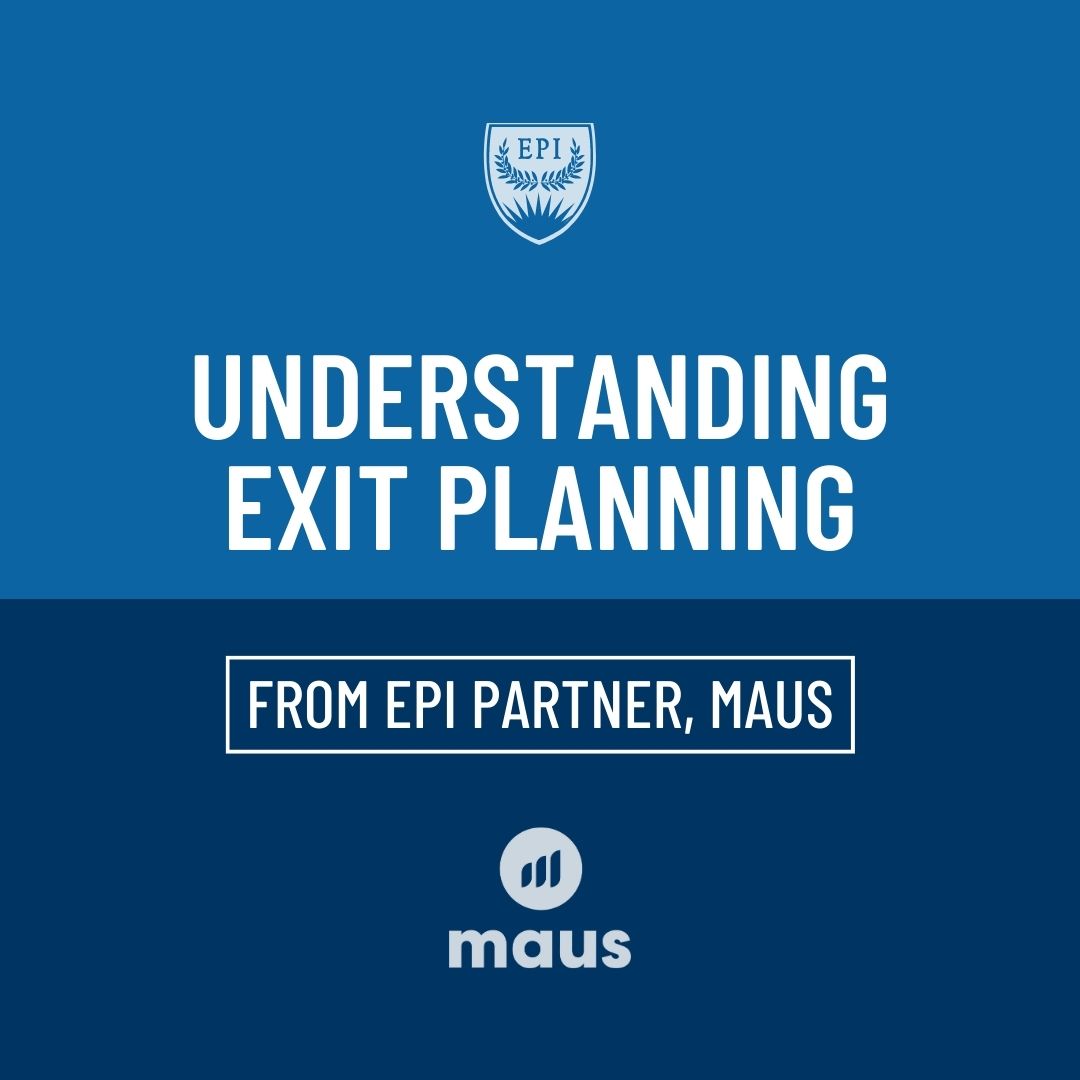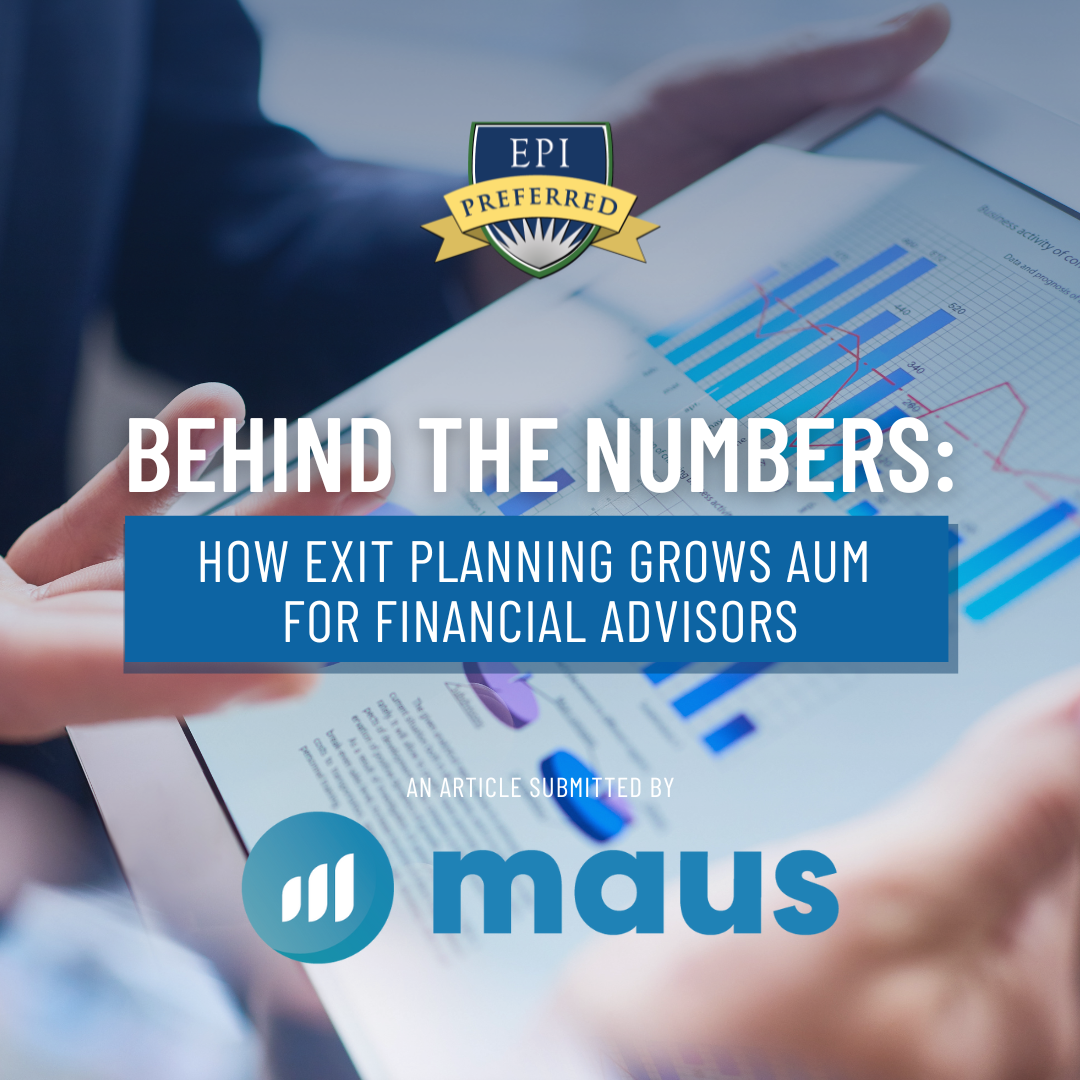
THE EXIT PLANNING BLOG
Keep up-to-date with exit planning, succession planning, industry trends, unique specialty insights, and useful content for professional advisors and business owners.
Share this
Understanding Exit Planning
by Colleen Kowalski on January 9, 2023

The following article was provided by EPI Partner, Maus
Roughly 50% of small business owners in Australia, New Zealand, the USA, the UK, and Canada are over 55 years of age, and this rate is increasing each year. The result is a massive increase in the number of business owners looking to sell or transition out of the business and retire. Before an owner decides to sell, however, they should understand exit planning.
The Need for Exit Planning
Research shows 70% of business owners think succession and exit strategy planning is important but only 15% of baby boomer business owners globally prepare for this transition. In countries such as Australia, the USA and the UK, where a lot of work goes into education on the subject, this number is higher, but it still means that less than 20-30% prepare for selling their business. For the UK, 45% of business owners either don’t know how they will exit or plan on closing the business once they exit.
In Australia, 64% of business owners would seriously consider selling if approached. Also, 32% wish to retire yet 34% of business owners do not have an adequately funded retirement income. As for the US, 78% of small business owners plan to sell their businesses to fund more than 60% of their retirement. According to the Exit Planning Institute, 80-90% of a business owner’s wealth is tied up in the value of the business.
Establishing Exit Planning Objectives
If you’re a business owner planning to sell your business, it is critical that the sale price allows you to retire comfortably without compromising your quality of life. Toward this end, you must ask yourself a few key questions. Once answered, you’ll have a better understanding of exit planning.
Key Question About Your Exit Objectives
- How much is your business worth now?
- Is this enough to retire or move on?
- How much would you like to sell the business for?
- How much would you need after tax to fund your lifestyle?
- When would you like to sell?
- Who do you want to sell or transfer your business to?
Every Business Owner Needs Exit Planning
It’s important to understand that exit planning is not just about the baby boomers. It is not solely about the value of the business either. As baby boomers near retirement and the average age of small business owners increases, the age-old laws of supply and demand come into play. The higher the supply, the more likely a downward pressure on price will be applied. It is a myth to think this is an age and retirement issue. On the contrary, these forces affect the value of all business owners, regardless of age.
A major impediment to succession planning is that most entrepreneurs don’t understand it. They don’t appreciate the drivers underpinning the creation of an exit strategy. Nor do they associate personal wealth with wellness. An exit strategy needs to be achievable with a realistic time frame and measurable milestones. It also needs to link with a business owner’s wealth, risk, and tax plan and relates directly to personal wellness and the ‘life after’ plan.
Maus Software Solutions
Maus helps businesses gain a better understanding of exit planning. Our software uses powerful tools to close the value gap, track progress, and measure growth. It also identifies risk factors that could devalue the business. It includes exit planning automation that allows for easy integration with other software such as QuickBooks and Xero. Maus software also helps business advisors help clients with their exit and succession planning needs.
Book a demo today and get started!
CEPAs, Commercialize Your CEPA Credential
Download the CEPA Implementation Guide and learn how Maus seamlessly integrates with the EPI’s Value Acceleration Methodology by completing the form below.
(Request the Implementation Guide here!)
Follow our socials for more exit planning content and strategies.
Share this
- Blog (520)
- CEPA (367)
- exit planning (243)
- CEPA community (181)
- Business Owner (135)
- Exit Planning Summit (85)
- EPI Chapter Network (82)
- Exit Planning Partner Network (76)
- EPI Announcement (49)
- Content (48)
- Value Acceleration Methodology (46)
- Webinars (37)
- Excellence in Exit Planning Awards (32)
- Marketing (30)
- 2024 Exit Planning Summit (28)
- 5 Stages of Value Maturity (26)
- Books (24)
- Exit Planning Teams (22)
- EPI Team (21)
- 2023 Exit Planning Summit (20)
- Leadership (20)
- family business (19)
- women in business (19)
- Intangible Capital (18)
- Exit Options (17)
- Black Friday (16)
- EPI Academy (16)
- CPA (15)
- State of Owner Readiness (14)
- Chapters (12)
- Chris Snider (12)
- National Accounts (12)
- Small business (12)
- Walking to Destiny (12)
- charitable intent (12)
- personal planning (12)
- Financial Advisors (9)
- 5 Ds (8)
- About us (8)
- Podcast (8)
- Insiders Bash (7)
- Scott Snider (7)
- Christmas (6)
- Exit Planning Content Library (6)
- Case Studies (5)
- Owner Roundtables (5)
- Season of Deals (5)
- Value Advisors (5)
- financial planning (5)
- Awards (4)
- Exit & Succession (4)
- Five Ds (4)
- executive training (4)
- Circle of Excellence (3)
- Owners Forum (3)
- forbes (3)
- EPI Thought Leadership Council (2)
- Exit Is Now Podcast (2)
- Peter Christman (2)
- Three Legs of the Stool (2)
- Veteran (2)
- Whitepapers (2)
- author (2)
- Business Owners Forum (1)
- DriveValue (1)
- business consultants (1)






